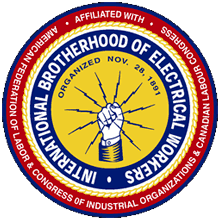Heat & Frost Insulators On The Verge of Major Breakthrough
September 24, 2012
By Joe Maniscalco
 The Five-hundred-member Heat & Frost Insulators of Local 12 in New York and Long Island is currently headquarters inside a squat, garage-like structure dwarfed by rapidly-developing high-rise offices buildings in a bustling corner of western Queens. And when a modest group of 22 new apprentices were successfully organized last week, it was considered a great gain for the organization.
The Five-hundred-member Heat & Frost Insulators of Local 12 in New York and Long Island is currently headquarters inside a squat, garage-like structure dwarfed by rapidly-developing high-rise offices buildings in a bustling corner of western Queens. And when a modest group of 22 new apprentices were successfully organized last week, it was considered a great gain for the organization.
But that could all soon change.
In a challenging atmosphere for labor, where unions throughout the city are struggling to organize, legislation at both the State and Federal levels providing facility owners and developers with attractive tax incentives to effectively insulate their on-site mechanical systems, could – if passed – double Local 12’s ranks in less than two months. According to Local 12 Business Manager Matthew Aracich, the current 500-member organization could easily grow to 2500 in as little as two-and-a-half years. And continue to grow after that.
“We are looking towards the future now,” Aracich said. “Our opportunities are endless.”
Already, the union – which celebrated its 100th anniversary over the summer – has carefully begun assembling the properties surrounding its modest 5700-square-foot headquarters at 25-19 43rd Avenue in Long Island City with an eye towards selling, and moving into substantially larger facilities. Local 12’s current asking price for its real estate holdings hovers between $5- and $7 million.
Although it enjoys bipartisan support, the Mechanical Insulation Installation Incentive Act of 2011 [HR2866], which Local 12 is counting on to help improve its fortunes, has been sitting in the Ways and Means Committee since last year. But that hasn’t deterred the union, or its efforts to get the legislation passed. Raising the union’s public profile is one way Local 12 is slowly managing to convince legislators that they need to take action.
“Electricians have a giant lobby,” Aracich said. “That’s something that we don’t have. But we’re getting more and more people to understand who we are.”
The union is a vastly different operation than it was in its early days when its working members wrapped mechanical heating systems with asbestos and sewed it up in canvas. Asbestos – or more specifically asbestos abatement is – no longer part of Local 12’s profile.
Today, mechanical insulators operate inside all types of buildings of varying capacities, wrapping both heating and cooling units with specially designed materials to either retain heat or prevent condensation, thereby reducing energy costs.
According to Local 12, just one man working a single day to properly insulate 45 feet of 8-inch high pressure steam, can save an operator $13,600 by year’s end. After 20 years, that single day’s work could translate into a whopping $272,000 in savings.
“We are generally less than one percent of the cost of the building, yet we actually have the largest return on investment that you can have on building infrastructure,” Aracich said.
According to the Local 12 business manager, officials at New York University were initially reticent about undertaking a one-week mechanical insulation project at one of its sites recently, and had to be convinced that paying for the two-man, $17,000 job would actually be an incredible cost-saving move on their part.
“The project ultimately paid for itself in a little under six weeks,” Aracich said. “That’s a 700 percent return on your money. Why do people look at insulation as a cost, when it should be looked at as an investment?”
New York City’s vast underground steam system is the largest in the entire world, and as such, represents the largest untapped resource for mechanical insulation savings in the nation. Local 12 already does a lot of work inside schools and hospitals, but more energy saving projects inside the State University of New York alone, could keep union members working for decades to come.
“If you don’t insulate, you’re just throwing your money out the flue,” Aracich said. “It’s no different than going into your home with a fireplace, taking out dollar bills and heating your home with them.”
Both the Hudson Yards project on the West Side of Manhattan near the Javitz Center, and the new World Trade Center, represent huge projects for mechanical insulators. On its own, the Hudson Yards project is expected to utilize almost half of the union’s workforce.
Technical advancements in integrated software, infrared devices and such, have helped Local 12 and other mechanical insulation advocates get their message across.
“Years ago, we could always say that we can save you money – but we could never tell you how much,” Aracich said. “We couldn’t pinpoint it. That’s all changed now.”
In addition to legislation like HR2866, Local 12 is urging changes in New York City’s building code so that it more closely aligns with European and Scandinavian countries, where mechanical insulation is a necessity for resource-conscience governments.
Such initiatives could also significantly extend the life of heating and cooling equipment, while also helping to cut down on pollution leaching into the environment. According to the union, effective mechanical insulation could save the United States 82 million barrels of oil, or the equivalent of 190,000 railroad cars of coal each year.
Nationwide, the kinds of legislative changes Local 12 is advocating could also create 89,000 new jobs, while saving companies $4.8 billion in revenue.
“These jobs are actually shovel-ready,” Aracich said. “They are just waiting for us to begin. And most of them will pay for themselves between four to six months. Then the savings are perpetual.”



